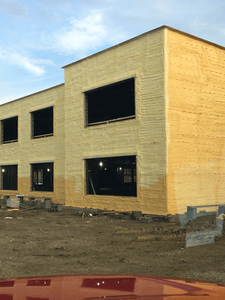
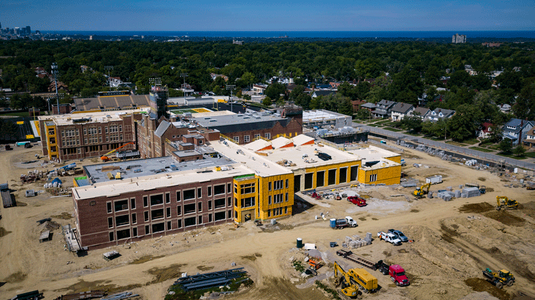
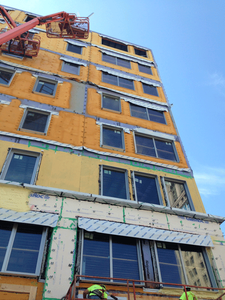
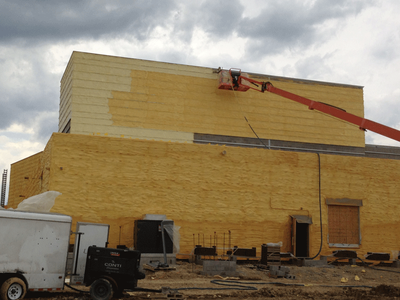
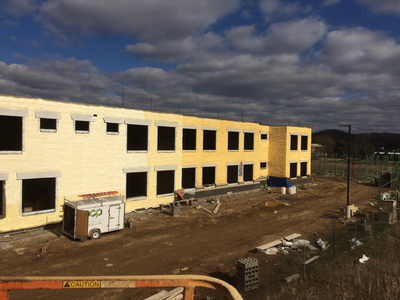
Spray Foam Insulation provides building envelope insulation and air sealing
Spray polyurethane foam is categorized by either open-cell or closed-cell insulation materials. Both materials provide a building enclosure with insulation and air sealing. Based on the needs of the project, engineers decide which material is best suited for installation.
Open-cell spray polyurethane foam, or ocSPF, is composed of an open cell structure in which the cells are filled with air. When applied the open-cell structure, it creates a soft, malleable foam. As with fiberglass and cellulose, air is the primary insulation component in ocSPF. The fine cell structure of ocSPF makes the material air-impermeable when applied at a certain thickness. Due to the fact that it is not air-permeable, ocSPF is ideal for use as an air-barrier material. When installed, air leakage throughout the building envelope is significantly lowered, ultimately conserving the building’s heating and cooling usage, and contributing to overall energy efficiency. The R-value per inch of open-cell foam typically ranges from R3.6 to R4.5 per inch.
Inversely, closed-cell spray polyurethane foam, or ccSPF, is composed of a closed cell structure which creates a rigid, hard foam when applied. Due to its rigid nature, in some instances, ccSPF can structurally enhance a building frame. The smaller cells of ccSPF trap an insulating gas referred to as a ‘blowing agent.’ The blowing agent has a lower thermal conductivity than still air, therefore increasing the R-value. Per inch, the R-value of typical closed-cell foam ranges from R5.8 to R6.9. Similar to ocSPF, ccSPF is also non-permeable to air, making it ideal for use as an air-barrier material. However, unlike ocSPF, ccSPF is non-permeable to water, making it ideal for applications in which the building envelope could be exposed to excessive amount of moisture.
OCP’s ABAA award-winning spray foam installation team can design, integrate, and install both open-cell and closed-cell spray foam to create an air-barrier for your building enclosure, ultimately stopping the uncontrolled flow of air into and out of the building enclosure.
